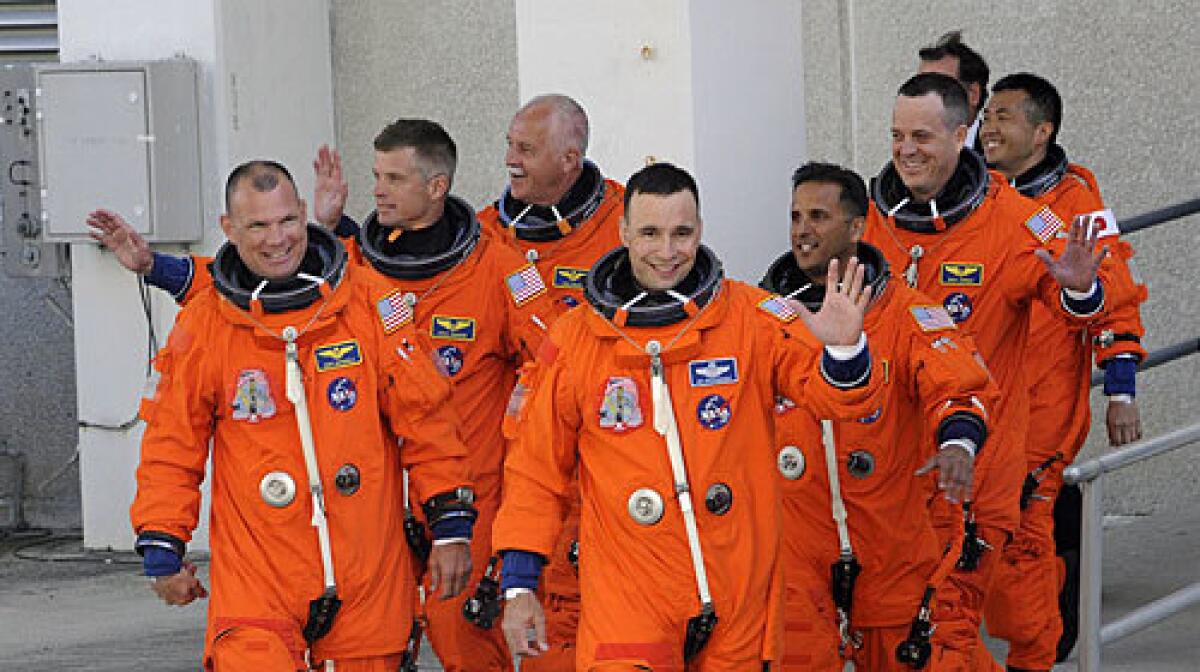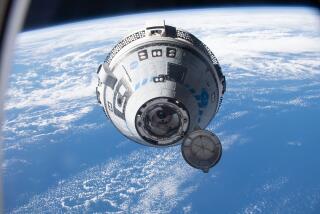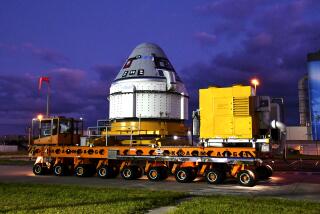Space shuttle Discovery blasts off with crew of 7

CAPE CANAVERAL, Fla. — Space shuttle Discovery and its crew of seven rocketed into orbit this evening, setting off on a space station construction mission cut short by launch delays that dragged on for more than a month.
Discovery rose from its seaside pad just as the sun was setting, a spectacular sight for a space agency anxious to get the flight going. As the shuttle sped away like a brilliant star, part of the launch plume glowed pink, peach and golden. The shuttle was visible for more than four minutes.
A hydrogen leak prevented Discovery from lifting off Wednesday and, before that, hydrogen valves kept the shuttle grounded for weeks in February. Launch pad repairs took care of the leak, and the astronauts were able to board their spaceship and lift off.
“Well, you had a little bit of a wait but that will just make the payoff that much sweeter,” launch director Mike Leinbach told the astronauts.
Commander Lee Archambault and his crew, which includes two former schoolteachers, should reach the international space station Tuesday. They’re delivering one last set of solar wings for the space station and some critical equipment for a relatively new water-recycling system.
No one was more eager to see Discovery take off than the three space station astronauts. Commander Mike Fincke was ecstatic when informed nothing was leaking at the pad.
“That is most excellent news,” Fincke told Mission Control. “That’s exactly what’s been on top of our minds.”
During Wednesday’s try, hydrogen gas spewed into the air from a vent line connected to Discovery’s external fuel tank. NASA replaced the hookups, but could find nothing broken.
The system remained tight during the countdown, and the only problem was a pressure drop in a helium-purge system that workers quickly resolved.
The only other oddity was a bat on the back of Discovery’s fuel tank this afternoon. The small fruit bat posed no debris threat to the shuttle.
The four-day leak delay forced NASA to shorten Discovery’s flight by a day and cut out a spacewalk. Because a Russian Soyuz rocket launch March 26, Discovery needs to be gone from the space station by the time that spacecraft flies. The Soyuz will carry up a fresh crew for the space station.
Discovery’s mission will last 13 days and feature three spacewalks instead of four, the first of which will take place Thursday to install the new solar wings. The two wings will join six already in place and bring the orbiting outpost up to full power.
The canceled spacewalk chores will be tackled by the space station crew after Discovery leaves.
Discovery also will deliver a spare urine-into-drinking water converter to replace one that’s broken up there, and a flusher and iodine solution to get rid of bacteria that’s lurking in the water dispenser.
NASA wants to double the size of the space station crew to six people by the end of May, and need the recycled water to drink.
Discovery originally was supposed to lift off Feb. 12, but NASA ordered extra tests for the valves that control the flow of hydrogen gas into the fuel tank. The three valves in the shuttle’s engine compartment kept being replaced to ensure they were the best available and safe to fly.
One of these valves -- which maintain tank pressure during liftoff -- broke during the last shuttle launch in November. No harm was done, but NASA did not want to take any chances with Discovery.
Two educator astronauts are aboard Discovery: Joseph Acaba and Richard Arnold II, chosen by NASA five years ago. There also is one Japanese astronaut, Koichi Wakata, who will move into the space station for at least three months, replacing one of the current crew. Many of the 200 Japanese citizens on hand for the first launch attempt were gone by today.
More to Read
Sign up for Essential California
The most important California stories and recommendations in your inbox every morning.
You may occasionally receive promotional content from the Los Angeles Times.










